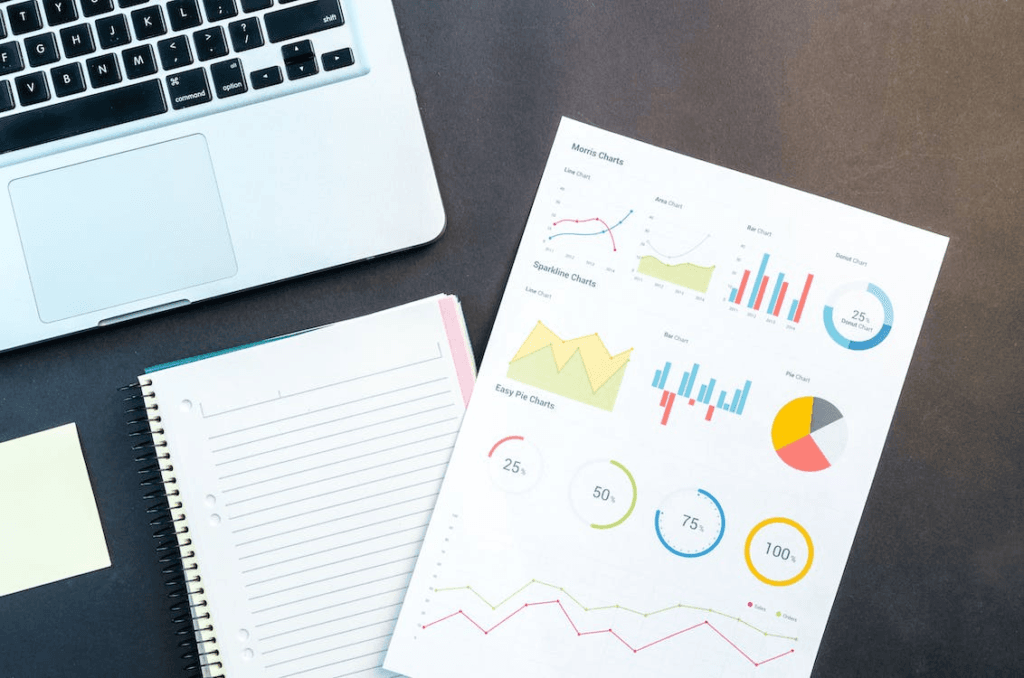A sales funnel is a crucial aspect of business success. Essentially, it’s a visual representation of the buyer’s journey from the first interaction with your brand to the final purchase.
Mastering your sales funnel can significantly enhance your conversion rate, customer relations, and overall business growth. This comprehensive guide will help you understand what a sales funnel is, why it’s crucial to your business, and how you can build one effectively.
Understanding the Concept of a Sales Funnel
The concept of a sales funnel is foundational to the field of marketing and sales. It provides a systematic approach to converting prospects into customers and helps businesses understand and optimize the customer journey.
Definition of a Sales Funnel

A sales funnel, also known as a sales process or revenue funnel, is a model that represents the theoretical customer journey towards the purchase of a product or service. In its simplest form, a sales funnel is divided into several stages – awareness, interest, decision, and action, often referred to by the acronym AIDA.
At the top or widest part of the funnel, you have ‘awareness,’ where potential customers first learn about your business. As the funnel narrows down, prospects become leads, demonstrating ‘interest’ in your products or services.
Moving further down, leads arrive at the ‘decision’ stage where they consider purchasing. Finally, at the bottom or narrowest part of the funnel, leads take ‘action’ and become customers.
Funnelteacher.com‘s founder, Shailen Vandeyar says, “Think of a sales funnel like a first date. It starts with a casual hello (awareness), moves to getting to know each other (interest), deciding to meet again (decision), and finally becoming an item (action)! Fail at any stage and you’ll have no business left with the other person.
An easy example to illustrate a sales funnel could be an online shoe store. When a user stumbles upon a sponsored post on social media and gets to know about the brand – that’s the ‘awareness’ stage.
They click on the post and start browsing through the shoe collections – they’re now at the ‘interest’ stage. If they select a pair of shoes and add it to the cart, they’re at the ‘decision’ stage. Finally, if they complete the purchase, they’ve reached the ‘action’ stage and become customers.
Importance of a Sales Funnel in Business
Sales funnels are incredibly important for several reasons. They offer businesses a clear roadmap to guide customers from the first point of contact through to the purchase. This roadmap allows businesses to identify bottlenecks or areas of friction within the customer journey and take steps to optimize these pain points.
Moreover, a sales funnel helps businesses focus their efforts and resources on leads that are most likely to convert, improving overall efficiency and return on investment (ROI).
For instance, understanding where in the sales funnel a prospect is can help businesses tailor their messaging and offers to match the prospects’ needs and expectations, thereby increasing the likelihood of conversion.
Relationship between Sales Funnel and Business Growth

The sales funnel plays a crucial role in business growth. By guiding your prospects through each stage of the buying process, you’re not only increasing your chances of making a sale, but also building a relationship with your customers, which can lead to repeat business and referrals.
- Guides Customer Journey: A well-structured sales funnel plays a pivotal role in guiding potential customers through their purchasing journey. By clearly defining the stages from the first point of contact to the final purchase (and beyond), businesses can ensure a smoother transition of prospects from one phase to another, reducing friction and increasing the chances of conversion. This, in turn, can significantly contribute to business growth.
- Facilitates Targeted Marketing: A sales funnel allows businesses to segment their audience based on their stage in the buying journey. This way, businesses can tailor their marketing efforts to meet the unique needs and preferences of each segment, making their marketing more efficient and effective, leading to business growth.
- Optimizes Resource Allocation: With a clear sales funnel in place, businesses can identify at which stage potential customers may be dropping off or converting less than expected. This helps in focusing efforts and resources on improving those specific stages, thereby increasing the overall efficiency of the sales process and fostering growth.
- Increases Customer Lifetime Value (CLV): An effective sales funnel doesn’t end with the purchase—it extends into post-sale interactions as well. By focusing on customer retention and loyalty, businesses can increase the customer lifetime value, leading to steady revenue and business growth in the long term.
- Promotes Data-Driven Decision Making: Sales funnels provide businesses with valuable data about customer behavior at each stage. This data can help in making informed, strategic decisions that align with business goals and drive growth.
- Improves Forecasting and Goal Setting: By tracking and analyzing the performance of the sales funnel, businesses can accurately forecast future sales and growth trends. This also helps in setting realistic goals and benchmarks, promoting steady and sustainable growth.
- Enhances Customer Experience: A well-structured sales funnel ensures a consistent and engaging customer experience, building trust and credibility. Satisfied customers are more likely to become repeat buyers and brand advocates, contributing to business growth.
- Streamlines Sales and Marketing Alignment: A clearly defined sales funnel aids in aligning the efforts of the sales and marketing teams. When both teams understand the journey a customer takes from being a prospect to becoming a buyer, they can work together more effectively to nurture leads and close deals, leading to increased sales and business growth.
Related Read: 21+ Ways Chatbots can Skyrocket Lead Generation and Conversions
Components of a Sales Funnel
A sales funnel is typically divided into four stages: Top of the Funnel (ToFu), Middle of the Funnel (MoFu), Bottom of the Funnel (BoFu), and Post-Sale. Each stage represents a different phase in the customer’s journey and requires different strategies for engagement. Let’s examine each stage in detail:
A. Top of the Funnel (ToFu): Attracting Prospects
The top of the sales funnel represents the stage where you attract potential customers. At this stage, you’re trying to generate awareness about your brand and products/services.

Understanding Your Audience: The first step in attracting prospects is to understand your audience well. Use market research and buyer personas to identify your target audience’s needs, interests, and pain points.
Initial Customer Touchpoints and Strategies: Your strategies at this stage should focus on attracting people to your brand through various channels. Content marketing (e.g., blogs, infographics), social media marketing, SEO, and PPC campaigns are typical ToFu strategies.
For example, a fitness brand might publish a blog post titled “10 Easy Exercises for Beginners” to attract people interested in starting a fitness journey.
B. Middle of the Funnel (MoFu): Nurturing Leads
Once you’ve attracted potential customers, the next step is to nurture them into qualified leads.

Importance of Lead Nurturing: Not all prospects are ready to buy immediately. Lead nurturing involves building a relationship with these prospects, providing them with valuable content, and gradually guiding them towards a purchasing decision.
Techniques for Effective Lead Nurturing: Email marketing, targeted content (e.g., case studies, how-to guides), and webinars are common MoFu strategies. Suppose our fitness brand has a prospect’s email address. In that case, they might send them a series of emails with more detailed workout plans, nutrition advice, and perhaps a free webinar on fitness for beginners.
C. Bottom of the Funnel (BoFu): Converting and Closing
The bottom of the funnel is where prospects make the decision to become customers.

Turning Prospects into Customers: At this stage, your goal is to convince prospects that your product or service is the best solution for their needs.
Techniques for Effective Closing: BoFu strategies often involve free trials, product demos, discounts, or consultations. Our fitness brand, for example, could offer a free one-week trial of their premium workout program, or a one-on-one consultation with a personal trainer.
D. Post-Sale: Retaining Customers and Encouraging Referrals
The customer journey doesn’t end with a sale. In the post-sale stage, your focus shifts to retaining customers and turning them into brand advocates.
Importance of Customer Retention and Referrals: It’s much more cost-effective to retain an existing customer than to acquire a new one. Moreover, satisfied customers can become powerful advocates for your brand, referring new customers through word-of-mouth marketing.
Techniques for Customer Satisfaction and Advocacy: Excellent customer service, loyalty programs, and referral programs are all effective post-sale strategies. The fitness brand might offer an ongoing personalized training plan for existing customers, or a referral bonus for every new customer they refer.
Each stage of the sales funnel requires careful thought and strategy. By understanding the different needs of prospects at each stage, you can create a more effective and efficient sales process.
Creating an Effective Sales Funnel – A Step-by-Step Guide

Developing an effective sales funnel requires a strategic approach, understanding of your customer base, and continuous optimization. Here’s a step-by-step guide that will help you create a sales funnel that’s designed for success:
Step 1: Understanding Your Audience and Defining Buyer Personas
Before you start building your sales funnel, it’s crucial to know who you’re selling to. Understanding your audience is the first step toward designing a funnel that attracts, engages, and converts effectively.
- Identify Your Target Audience: Define the demographics, psychographics, interests, needs, and behaviors of your potential customers.
- Develop Buyer Personas: Buyer personas are fictional representations of your ideal customers based on the data you’ve collected. They help you understand your customers better and tailor your strategies to meet their needs.
- Understand Their Buying Journey: Identify the steps your customers take before making a purchase. This will help you define the stages of your sales funnel.
Step 2: Identifying Stages in Your Customer Journey
A sales funnel typically consists of three main stages: awareness, consideration, and decision. Depending on your business and audience, there might be additional stages or sub-stages.
- Awareness: This is the top of the funnel where prospective customers first become aware of your brand or product. Identify the channels through which your audience discovers your brand.
- Consideration: In this stage, prospects are aware of their problem and are considering various solutions, including your product or service. Determine what kind of information they need to evaluate their options.
- Decision: This is the bottom of the funnel where leads are ready to make a purchase. Understand what might convince them to choose your solution over others.
Step 3: Creating Content for Each Stage of the Funnel
Content is a key component of your sales funnel. It attracts, engages, and nudges your audience towards the next stage of the funnel.
- Awareness Stage Content: Create content that educates your audience about their problem and introduces them to possible solutions. This could be blog posts, infographics, social media posts, or webinars.
- Consideration Stage Content: Provide in-depth information about your product or service, its benefits, and how it compares to other solutions in the market. Case studies, product demos, and comparison guides are excellent forms of consideration stage content.
- Decision Stage Content: Develop persuasive content that convinces your audience to purchase from you. Customer testimonials, product documentation, and special offers work well at this stage.
Step 4: Leveraging Various Channels to Move Leads Through the Funnel
Different channels are effective for different stages of the sales funnel. Identify the best channels for each stage and leverage them to guide your audience through the funnel.
- Awareness Channels: Use SEO, PPC, social media, and content marketing to attract potential customers to your website or landing page.
- Consideration Channels: Use email marketing, retargeting ads, and more detailed content to keep your audience engaged and considering your product or service.
- Decision Channels: Use personalized email campaigns, retargeting, and sales calls to close the deal.
Step 5: Establishing Metrics and KPIs to Track Progress
Finally, you need to establish the right metrics and KPIs to monitor the performance of your sales funnel. This will help you identify areas for improvement and measure your success.
- Awareness Stage Metrics: Track website traffic, social media engagement, and the number of new leads.
- Consideration Stage Metrics: Measure email open rates, click-through rates, content engagement, and lead quality.
- Decision Stage Metrics: Track conversion rates, average order value, customer acquisition cost, and customer lifetime value.
Remember, building an effective sales funnel is not a one-time task. It requires continuous monitoring, testing, and optimization to ensure it stays effective and aligns with your audience’s changing needs and behaviors. Follow these steps, but also be flexible and ready to adapt as you learn more about your audience and market.
Tools and Technologies for Building Sales Funnels
In this modern era, sales funnels are no longer managed manually. Instead, various tools and technologies make it possible for businesses to efficiently create, manage, and optimize their sales funnels. Let’s look at an overview of these tools and dive into each category.

Sales funnel tools are applications or software designed to assist businesses in managing their sales processes. They help streamline the funnel, automate tasks, analyze performance, and ultimately drive better conversions.
There are different categories of tools, each playing a significant role in your sales funnel. These include Customer Relationship Management (CRM) tools, marketing automation tools, and analytics tools.
CRMs for Managing Customer Relationships
CRMs are a crucial part of the sales funnel, acting as the backbone of your customer interactions. They help manage leads, track customer interactions, and organize data, thus simplifying the sales process.
- Salesforce: A comprehensive CRM solution, Salesforce, provides a suite of tools to help businesses track and manage customer information and interactions in one place.
- HubSpot: HubSpot is a platform that combines marketing, sales, and service software, including a powerful CRM. It’s an all-in-one platform that helps businesses attract visitors, convert leads, and close customers.
- Zoho CRM: Zoho offers a robust CRM solution that catifies sales automation, pipeline management, and team collaboration. It is especially beneficial for small to medium-sized businesses.
Marketing Automation Tools for Lead Nurturing
Marketing automation tools are designed to automate repetitive marketing tasks, such as sending emails, social media posts, and other website actions. These tools play a significant role in nurturing leads and moving them down the sales funnel.
- Marketo: An Adobe platform, Marketo offers a range of marketing automation tools, including email marketing, lead management, and analytics.
- ActiveCampaign: ActiveCampaign combines email marketing, marketing automation, and CRM in one easy-to-use platform. It’s known for its automation capabilities, which can help businesses nurture leads more effectively.
- Mailchimp: Best known for its email marketing services, Mailchimp has evolved into an all-in-one marketing automation platform. It helps businesses engage with their audience, automate their communications, and gather insights.
Analytics Tools for Measuring Performance
Once your sales funnel is in place, it’s crucial to track and measure its performance. Analytics tools provide insights into your funnel’s effectiveness, identify areas for improvement, and track key performance indicators (KPIs).
- Google Analytics: A comprehensive tool, Google Analytics, can help you understand your website traffic, track user behavior, and measure your sales funnel’s performance.
- Kissmetrics: Known for its customer analytics features, Kissmetrics provides insights into user behavior across multiple devices, helping businesses make data-driven decisions.
- Mixpanel: Mixpanel offers user analytics for mobile and web, helping businesses understand every user’s journey and automate the communication process.
These tools, when integrated properly, can significantly improve your sales funnel’s efficiency and effectiveness. The key is to choose tools that best fit your business needs and align with your sales funnel strategy. Remember, the tools are there to aid you, but the strategy and execution are ultimately what will drive success in your sales funnel.
Tips for Optimizing Your Sales Funnel
While creating a sales funnel is a significant step towards achieving your business goals, the process doesn’t stop there. Your sales funnel is a dynamic entity that requires constant fine-tuning to yield the best results. Here are some essential tips for optimizing your sales funnel.
Regular Testing and Adjustments
Testing is a crucial part of any marketing strategy, and it’s no different when it comes to sales funnels. Regularly testing various elements of your funnel can provide valuable insights into what’s working and what’s not.
- A/B Testing: Also known as split testing, A/B testing involves comparing two versions of a webpage, email, or other marketing assets to see which one performs better. You might test different headlines, images, or CTAs, for example.
- Multivariate Testing: While A/B testing compares two versions, multivariate testing involves testing multiple variables simultaneously. It can provide more complex insights, but requires a larger audience to be effective.
Remember, it’s not just about conducting tests, but about making adjustments based on the results. Keep an open mind, and be ready to tweak your strategies as needed.
Addressing Leaks in the Sales Funnel
Even the most well-structured sales funnel will have leaks—places where potential customers drop out of the funnel. Identifying and addressing these leaks is a critical part of optimization.
- Analytics: Use your analytics tools to spot where people are leaving your funnel. Is there a particular stage where you see a significant drop-off? That’s likely where your leak is.
- Customer Feedback: Don’t underestimate the value of customer feedback in identifying funnel leaks. Reach out to lost leads or customers to find out why they didn’t convert. You can even use social media management tools for this.
Once you’ve identified the leaks, brainstorm potential solutions. It could involve adjusting your messaging, offering a more compelling CTA, or improving your product offering.
Keeping the Sales Funnel Updated with Market and Customer Changes
The market landscape is ever-changing, and customer preferences evolve with it. What worked a year ago might not work today. Keep a pulse on market trends and customer behavior changes, and adjust your sales funnel accordingly.
- Customer Surveys: Regularly survey your customers to understand their needs, preferences, and pain points. Their feedback can provide valuable insights into how you might need to adjust your sales funnel.
- Competitor Analysis: Keep an eye on what your competitors are doing. If they’re seeing success with a particular strategy, it might be worth testing in your own sales funnel.
Importance of Team Training and Alignment in Optimizing the Funnel
The sales funnel isn’t the sole responsibility of the sales team. It requires alignment and collaboration from marketing, customer service, product development, and more.
- Cross-Departmental Training: Ensure all teams understand the sales funnel and their role in moving customers through it. Regular training sessions can help.
- Collaboration: Encourage open communication and collaboration among teams. For example, the marketing team’s insights can help the sales team close deals, while customer service interactions can inform product development.
Optimizing your sales funnel isn’t a one-time task. It’s a continuous process of testing, adjusting, learning, and evolving. But with these tips in mind, you’re well on your way to creating a more effective, high-converting sales funnel.
Wrapping It Up
Building an effective sales funnel isn’t an overnight task—it requires time, effort, and continuous optimization. However, the payoff is worth it. A well-constructed sales funnel can significantly enhance your business’s growth by attracting more leads, improving conversion rates, and boosting customer retention.
Start building your sales funnel today, and watch your business thrive.
Read Next:



















